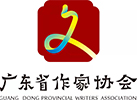
标题

标题
内容
首页 > 自定义类别 > 海上丝绸之路文学发展论坛 > 发言
以人文价值链融合粤港澳大湾区的文学发展
更新时间:2018-11-11 作者:丘树宏(中国)来源:广东作家网
人文价值链是粤港澳大湾区一个非常突出而独特的东西,正是这个非常丰富而集中突出的人文价值链,使得大湾区的“人文湾区”建设具备了最大公约数的核心和灵魂。
粤港澳大湾区的人文价值链,大概体现在如下几个方面。
首先是历史的同一性。粤港澳大湾区的城市,自古同属于百越之地,秦始皇统一岭南之后,又基本同属于南海郡范畴。两千多年来,虽然政制不断变化,但是11个城市的人文历史总是维持着千丝万缕的关系。
其次是人口的同一性。11个城市,虽然也有一定数量的客家人和闽南语系的族群,改革开放后在一些城市特别是深圳等几个城市外来人口超过了本土人口,但绝大多数城市都是以广府人为主体。
第三是语言的同一性。与人口的同一性一致,广州话是11个城市共同的话语体系,即使外来人口占多数的城市,广州话的地位也依然处于核心地位。
第四是文化的同一性。11个城市,除了香港和澳门渗入了殖民文化外,岭南文化和珠江文化一直占统治地位。
必须提醒和强调的是,在所有这些人文的渊源之中,还蕴含着一个奇迹性的现象,那就是一代伟人孙中山先生。11个城市,无不与孙中山有着密不可分的关系,无不深深烙上了孙中山的印记。这是包括东京湾区、纽约湾区、旧金山湾区,甚至是世界上任何一个城市群所没有的一个空前绝后的奇迹。
中山,是孙中山的出生地,是他的故乡;澳门,是孙中山从学校走进社会从医的地方;香港,是孙中山赴夏威夷、早年求学和革命的根据地;广州,是孙中山革命的圣地;东莞曾经是孙中山家族的祖居地;珠海在孙中山时代同属香山县,与孙中山的关系极深;孙中山曾三次莅临肇庆谋划革命;深圳、佛山、江门,都有许多华侨华人追随孙中山革命。11个城市都有着众多的孙中山文化遗存。这种人文元素将是大湾区交流合作最重要的无形力量,是最高的竞争力,我们必须十分重视发掘总结,需要十分智慧地开发利用。
而这种特殊而丰富的人文价值链,则给大湾区的文学创作以及大湾区城市之间的文学融合与发展提供了无限的可能性。
首先是在文学题材方面的融合发展。岭南的历史变迁、珠江的历史变迁,自新石器时代开始,一直到改革开放,大湾区11个城市一衣带水、唇齿相依。千百年来的历史是一个浩大的富矿,取之不尽。大湾区可以做出一个规模空前的规划,有分工有合作的部署创作。
其次是文学机构方面的融合发展。人口结构的同一性,语言的同一性等,给文学机构的合作交流提供了良好的载体和基础。可以成立一个文学联盟,以轮流坐庄的方式,定期不定期举行会议,研讨交流合作事宜。
再次是文学活动方面的融合发展。11个城市交通十分便利,各自的文学活动也丰富多彩。可以设置粤港澳大湾区形式多样的文学采风、交流和创作活动,组织大湾区文学奖、文学展会、文学沙龙、文学培训,等等。
孙中山先生早于1919年就在其《实业计划》中提出空前宏伟的建设蓝图,其中第三计划就是建设一世界大港。99年前,孙中山已经注意到珠江口地区具备的港区优势,并将其视为国际发展计划的重要拼图。在《实业计划》之第三计划中,孙中山开篇就阐明广州是此“世界大港”的中心。在孙中山的构想中,这个“世界大港”应当涵盖广州、香港、澳门,并同时联动珠江沿岸诸多城市。只是,相比如今粤港澳大湾区“9+2”的城市格局,当时珠江西岸城市远比东岸密集和发达。
由于各种缘故,孙中山的有生之年没有实现他的构想,100年后,这个伟大的梦想正在付诸实施。
这样一个伟大的历史人物,这样一个伟大人物与粤港澳大湾区有着这样特殊而深厚的关系,注定了孙中山是这个大湾区的人文核心和灵魂所在。孙中山第一个提出“振兴中华”的口号,这正是“中国梦”最早的雏形。最重要的是,孙中山文化的特质,除了有着优秀的中华传统文化,又吸收了世界先进文明,是大陆文化与海洋文化相融合的“咸淡水文化”,与粤港澳大湾区的文化特质高度吻合、高度一致。
Integrate Literary Development Through Cultural
Value Chain In Greater Bay Area
Qiu Shuhong (China)
Abundant and outstanding cultural value chain is a unique advantage in Greater Bay Area, which can also basically serve as the core and soul of developing a “culturally prosperous area”.
To be specific, the value chain can be boiled down to following aspects.
Above all, we share same origin. 11 cities here belonged to Baiyue region since ancient times ant then to Nanhai Jun(literally “South China Sea Prefecture”) after Qin Shi Huang united Lingnan region. Though witnessing ever-changing governments in ancient China for more than 2000 years, we have been inextricably linked in culture and history.
Next is similar population composition. Though living together with Hakka people and ethnic groups speaking Minnan dialects in history, along with flooding migrants that exceed local people especially in cities such as Shenzhen after reform and opening up, the majority are Cantonese people in most cities.
Thirdly, similar dialect. Similar population composition results in same dialect system. That is to say, Cantonese is absolutely the dominant one in this region.
Finally is same cultural background. Apart from colonial culture in Hong Kong and Macao, Lingnan culture has always been the mainstream.
To be noted, among all the relationships, Sun Yat-sen, a giant in our history, is a legendary symbol related to the 11 cities here. It is indeed a miracle that never be seen even in Tokyo Bay Area, New York Bay Area, San Francisco Bay Area or any other urban agglomeration in the world.
Zhongshan is Sun Yat-sen’s birthplace as well as hometown and Dongguan once located his ancestors’ residences. In addition, Macao witnessed his early career as a doctor and Hong Kong was a base city for his early study, experience to Hawaii and revolution. In particular, Guangzhou Revolution in 1895 was a milestone in Sun’s revolution life. Moreover, Zhuhai was part of former Hsiang-shan County, which included Zhongshan as well as partial Guangdong today and was renamed as Chung-shan County in memory of Sun. In this sense, the city has much to do with this great man. For the sake of revolution, Sun had three visits to Zhaoqing. Numerous domestic and overseas Chinese were his partners and followers in Shenzhen, Foshan and Jiangmen. In a word, the 11 cities in this area are all culturally bounded to Sun Yat-sen.
In the light of all the factors above, the 11 cities have always committed to closer exchanges and cooperation, especially cultural integration ahead of the strategic plan for the Great Bay Area. Furthermore, strengthened by the plan, cultural element will be a vital invisible driver and competitive power. So that we should realize its significance, then develop and utilize in a better way.
In my view, it is exactly the unique cultural value chain that offers infinite opportunities for literary creation and cultural integration.
To start with, integration of literary themes. Lingnan and Pearl River have witnessed mutually dependent relations among 11 cities in this area regardless of historical changes from ancient times. Against such backdrop, the shared history is an inexhaustible treasure to realize our great ambition, an unprecedented literary plan of specified divisions along with stronger cooperation.
Then comes the coordinated development of literary institutions. Similar population composition and dialect have already provided carrier and foundation for the cooperation and exchange. In that way, a literature alliance with rotating presidency can be set up to hold regular and irregular meetings and discussions on this issue.
Next is integrated prosperity of literary activities. High connectivity and colorful literary activities among all the cities are favorable conditions to more activities of inspiration, discussion and creation as well as literature prizes, exhibitions, saloons and training.
According to The International Development of China, Mr. Sun Yat-sen put forward a grand blueprint to build the world’s largest port in the plan 3. 99 years ago, he had already noticed the advantage of Pearl River’s estuary area and considered it substantial part of his plan. Specifically, Sun defined Guangzhou as the center of the “global port” plan, which included Hong Kong and Macao as well as further link cities along the Pearl River. Comparing to the current “9 + 2” urban pattern, the most distinctive difference is that cities on the western side of Pearl River were more densely-populated and developed than those on the eastern side.
Sun didn’t realize his ideal in his lifetime due to various reasons. However, after 100 years, the great plan is being put into practice today.
Therefore, such a great figure is destined to be the core and soul of cultural development in Greater Bay Area.And his ideal to “revitalize China” is the origin of “Chinese Dream”.Above all, Sun Yat-sen Culture is a combination of extraordinary Chinese culture and global advanced civilization as well as the integration of continental culture and marine culture, which is highly consistent with the cultural characteristics in Greater Bay Area.